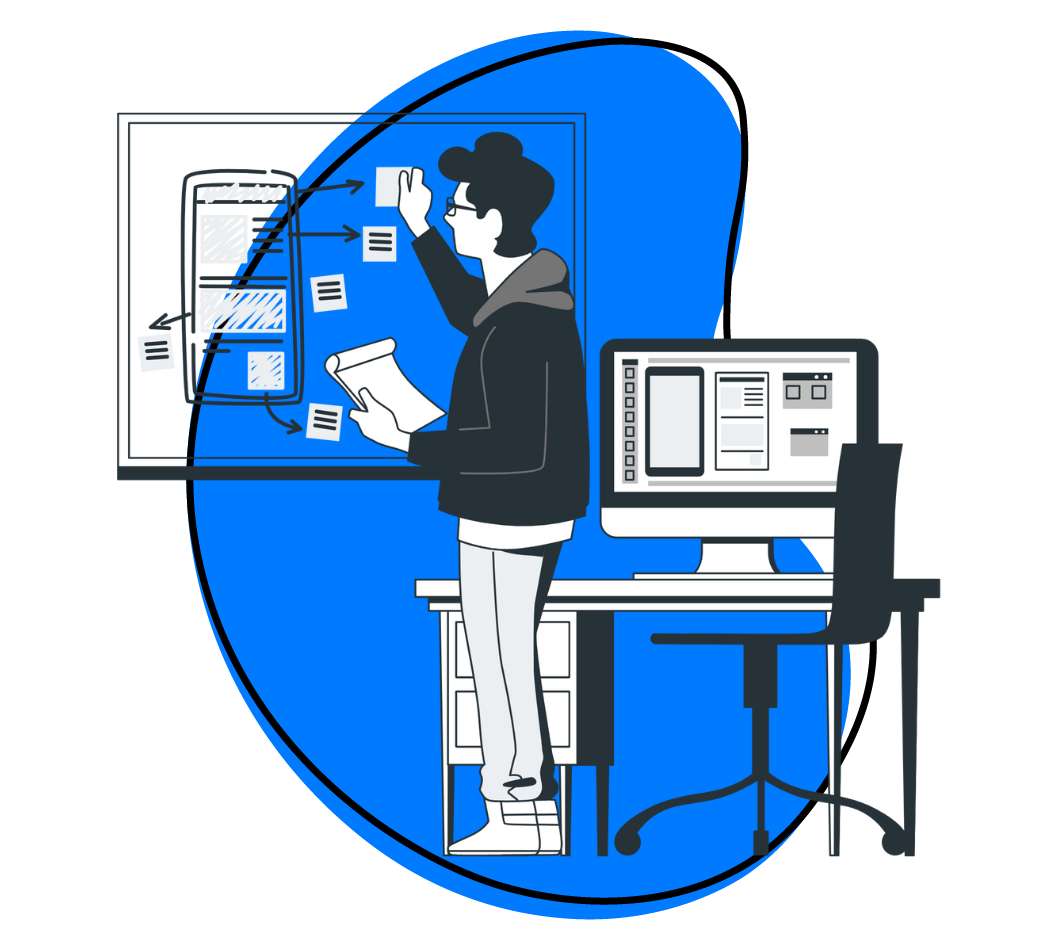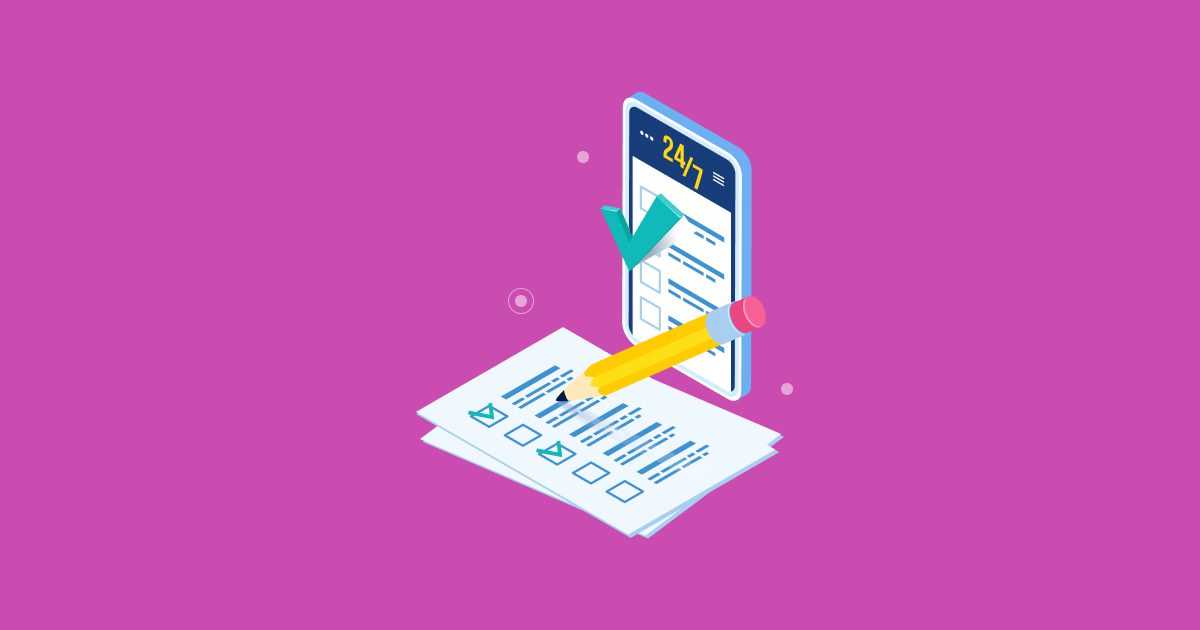In the changing world of product development, a structured approach is essential. This is where a product development checklist becomes indispensable. It serves as a beacon of guidance, guaranteeing that each critical step in the process is carried out with care.
Software development experts and thought leaders acknowledge the significance of adopting best practices in product management. These practices act as a guide, leading software teams through each phase of product development, from idea generation to launch and beyond. In this blog post, we’ll examine the details of software product development, providing a thorough and user-friendly checklist for project managers and product teams to follow.
What is a Product Development Checklist?
A product development checklist is more than just a list of tasks; it’s a strategic framework ensuring every product development facet is carefully considered and executed. It serves as a roadmap, guiding teams through the entire lifecycle of bringing a product from concept to market. Each item on the checklist represents a critical milestone or action that must be addressed to ensure the product’s success.

Why You Need a Product Development Checklist
Let’s explore why integrating a product development checklist into your workflow is not just a good idea but a strategic imperative.
Ensures Comprehensive Planning
One of the primary reasons why a product development checklist is indispensable is its ability to facilitate comprehensive planning. The checklist serves as a roadmap, guiding teams through each development lifecycle phase—from ideation to commercialization.
By systematically outlining all the necessary steps and milestones, comprehensive planning ensures that everything is noticed and noticed. This minimizes the risk of costly errors, delays, and oversights, thereby increasing the likelihood of project success.
Facilitates Alignment with Business Objectives
Clear business objectives should drive Every product development initiative. However, without a structured approach, it’s easy for teams to lose sight of these objectives amidst the myriad tasks and challenges they encounter along the way. A product development checklist is a constant reminder of the overarching business goals, ensuring that every decision and action aligns with these objectives.
Whether prioritizing features, allocating resources, or defining timelines, the checklist helps maintain alignment with the organization’s strategic vision.
Promotes Cross-Functional Collaboration
Product development requires flawless collaboration among cross-functional teams, including product managers, engineers, designers, marketers, and quality assurance professionals. However, coordinating the efforts of these diverse stakeholders can be challenging, especially without a structured framework in place.
A product development checklist is a common reference point for all team members, fostering communication, transparency, and accountability. It delineates each team’s responsibilities, dependencies, and timelines, ensuring everyone is on the same page and working towards a common goal.
Minimizes Risks and Uncertainties
Product development is inherently risky, with numerous uncertainties lurking at every turn. From changing market dynamics to technical challenges and unforeseen obstacles, countless factors derail even the most meticulously planned projects. A product development checklist helps mitigate these risks by providing a systematic risk identification, assessment, and mitigation approach.
By proactively addressing potential risks and uncertainties at each stage of the development process, teams can minimize their impact and increase the likelihood of project success.
Enhances Resource Allocation and Management
Efficient resource allocation is crucial for the success of any product development initiative. However, with a clear understanding of project requirements, priorities, and dependencies, resources can be better allocated and utilized. A product development checklist helps optimize resource allocation by providing visibility into the project landscape.
By systematically identifying resource needs, dependencies, and constraints, teams can make informed decisions about resource allocation, ensuring that resources are deployed effectively to maximize productivity and minimize waste.
Improves Time-to-Market and Time-to-Value
In today’s fast-paced business environment, speed is of the essence. The ability to quickly bring innovative products to market can spell the difference between success and failure. A product development checklist helps streamline the development process, minimizing inefficiencies and bottlenecks that impede progress.
The checklist provides a clear roadmap and timeline for each development lifecycle phase, enabling teams to accelerate their time to market while delivering value to customers sooner. This enhances competitiveness and increases the organization’s return on investment.
Fosters Continuous Improvement and Iteration
The product development journey doesn’t end with a product’s launch; it’s an ongoing process of iteration and improvement. A product development checklist encourages a culture of continuous improvement by facilitating feedback loops and iterative cycles.
By gathering feedback from customers, stakeholders, and end-users, teams can identify areas for enhancement and refinement, informing future product iterations. This iterative approach enhances the quality and relevance of the product and ensures its long-term success and sustainability in the market.
Provides a Framework for Evaluation and Accountability
Evaluation and accountability are essential to any successful product development initiative. However, a structured framework can make assessing progress, identifying bottlenecks, and holding team members accountable for their contributions more accessible.
A product development checklist provides a clear framework for evaluation and accountability, allowing teams to track progress against predefined milestones, identify improvement areas, and promptly address any deviations from the plan. This promotes organizational transparency, discipline, and accountability, driving higher performance and success.
In essence, a product development checklist is more than just a list of tasks; it’s a strategic tool that empowers teams to navigate the complexities of product development with confidence and clarity. By ensuring comprehensive planning, promoting alignment with business objectives, facilitating cross-functional collaboration, minimizing risks and uncertainties, optimizing resource allocation, accelerating time-to-market, fostering continuous improvement, and providing a framework for evaluation and accountability, a product development checklist becomes an indispensable asset for organizations striving for innovation and excellence.

Steps of Product Development Checklist
- Product Ideas:
- Idea Generation: This stage involves brainstorming sessions, creativity workshops, or ideation sessions where team members come together to generate new product concepts or improvements to existing ones.
- Idea Screening: Once ideas are generated, they are evaluated against predefined criteria to assess their feasibility, market potential, alignment with business goals, and resource requirements.
- Idea Selection: Promising ideas that pass the screening process are selected for further development. This may involve prioritizing ideas based on strategic fit, market demand, competitive landscape, or technical feasibility.
- Conduct Market Research:
- Identify Target Market: Define the specific segments of the market that the product will target. This includes demographic information, psychographic characteristics, buying behavior, and geographical considerations.
- Analyze Customer Needs: Conduct surveys, interviews, or focus groups to understand the pain points, preferences, and unmet needs of target customers. Identify opportunities to address these needs through the proposed product.
- Competitive Analysis: Evaluate existing products in the market, assess their strengths and weaknesses, identify gaps or opportunities, and determine how the proposed product can differentiate itself from competitors.
- Define Product Specifications:
- Feature Requirements: Define the core features and functionalities that the product must include to address customer needs and provide value. Prioritize features based on their importance and feasibility.
- Design Specifications: Outline the aesthetic and ergonomic characteristics of the product, including its size, shape, color, materials, and user interface elements.
- Performance Criteria: Specify the performance metrics and quality standards that the product must meet, such as reliability, durability, speed, accuracy, and compatibility with other systems.
- Product Roadmap:
- Milestone Planning: Break down the product development process into key milestones or phases, such as concept development, prototyping, testing, and launch.
- Timeline and Dependencies: Establish realistic timelines for each milestone, taking into account resource availability, dependencies between tasks, and potential risks or delays.
- Resource Allocation: Identify the human, financial, and technological resources required to execute the product roadmap effectively. Allocate resources based on project priorities and constraints.
- Prototyping:
- Conceptual Prototypes: Create low-fidelity prototypes, such as sketches, storyboards, or wireframes, to visualize the basic structure and functionality of the product.
- Functional Prototypes: Develop functional prototypes or mockups that simulate the behavior and interaction of the final product. Use tools like 3D modeling software, rapid prototyping techniques, or interactive prototypes to refine the design and user experience.
- Iterative Refinement: Gather feedback from stakeholders, users, or usability testing sessions to identify areas for improvement and iterate on the prototype until it meets the desired objectives and quality standards.
- Test the Product:
- Functional Testing: Verify that the product performs as intended and meets the specified requirements. This includes testing individual features, integrations, and system functionality.
- Usability Testing: Evaluate the product’s user interface, navigation, and overall user experience. Identify any usability issues, accessibility barriers, or design inconsistencies that may affect user satisfaction and adoption.
- Performance Testing: Assess the product’s performance under various conditions, such as peak usage, heavy loads, or adverse environments. Measure factors like speed, responsiveness, scalability, and resource utilization.
- Security Testing: Validate the product’s resilience to security threats, vulnerabilities, and data breaches. Conduct penetration testing, vulnerability assessments, and code reviews to identify and mitigate potential risks.
- Develop a Marketing Strategy:
- Market Segmentation: Divide the target market into distinct segments based on demographics, psychographics, behavior, or needs. Identify the most lucrative segments to prioritize marketing efforts.
- Messaging and Positioning: Define the key messages, value propositions, and positioning statements that differentiate the product from competitors and resonate with target customers.
- Channel Selection: Determine the most effective marketing channels and tactics to reach and engage the target audience. This may include digital channels (e.g., social media, email, search engine marketing), traditional channels (e.g., print, TV, radio), or offline events (e.g., trade shows, conferences).
- Development and Testing:
- Coding and Implementation: Develop the product according to the defined specifications and design requirements. Use appropriate programming languages, frameworks, and development methodologies to ensure code quality, scalability, and maintainability.
- Design Integration: Integrate the design assets, user interface elements, and visual components into the development process. Ensure consistency between the design mockups and the final product.
- Quality Assurance: Conduct rigorous testing throughout the development process to identify and address defects, bugs, or performance issues. This includes unit testing, integration testing, system testing, and regression testing.
- Prepare for a Product Launch:
- Marketing Collateral: Develop marketing materials, sales tools, and promotional assets to support the product launch. This may include product brochures, website content, demo videos, sales presentations, and press releases.
- Training and Enablement: Provide training and support to sales, marketing, and customer support teams to ensure they are knowledgeable and equipped to effectively promote and sell the product.
- Logistics and Operations: Coordinate logistics and operational activities related to the product launch, such as inventory management, distribution logistics, and customer service readiness.
- Commercialization:
- Go-to-Market Execution: Execute the marketing strategy and promotional activities outlined in the product launch plan. Monitor campaign performance, track key performance indicators (KPIs), and optimize marketing tactics based on real-time data and feedback.
- Sales Enablement: Support sales teams with tools, resources, and training to drive customer acquisition and revenue generation. Provide sales collateral, product training, and ongoing support to facilitate the sales process.
- Customer Engagement: Engage with customers through various channels to gather feedback, address concerns, and nurture relationships. Build brand loyalty and advocacy by delivering exceptional customer experiences and value-added services.
- Gather Feedback for Future Improvements:
- Customer Feedback Loop: Establish mechanisms for collecting feedback from customers, such as surveys, feedback forms, customer support interactions, or product reviews. Analyze feedback to identify trends, patterns, and areas for improvement.
- Stakeholder Input: Solicit input and insights from internal stakeholders, including product managers, developers, designers, marketers, and executives. Incorporate their perspectives and expertise into the product development process.
- Data Analysis: Leverage analytics tools and data analysis techniques to gain actionable insights into product performance, user behavior, and market trends. Use data-drive
Benefits of Using a Product Development Checklist
Utilizing a product development checklist offers a myriad of benefits, including:
- Enhanced Efficiency: Streamlines the development process, reducing delays and bottlenecks.
- Improved Collaboration: Facilitates communication and collaboration among cross-functional teams.
- Minimized Risks: Identifies potential risks and challenges early, allowing proactive mitigation strategies.
- Better Quality: Ensures adherence to quality standards and customer requirements throughout the development lifecycle.
- Increased Accountability: Assigns clear responsibilities and deadlines, fostering accountability among team members.
- Faster Time to Market: Accelerates the product development cycle, enabling quicker market entry and competitive advantage.
Need Help With Software Product Development?
Navigating the intricacies of software product development can be daunting. Whether you’re a startup looking to bring a new product to market or an established company seeking to innovate, partnering with experienced professionals can make all the difference. From ideation to launch and beyond, outsourcing software product development to trusted experts can streamline the process, mitigate risks, and ensure success.
At Canadian Software Agency, we specialize in software product development, leveraging cutting-edge technologies and industry best practices to bring your vision to life. Our team of engineers, designers, and strategists works collaboratively with clients, offering end-to-end support across the entire product lifecycle. From conceptualization and prototyping to development, testing, and deployment, we’re committed to delivering innovative, scalable, and market-ready solutions that drive business growth.




